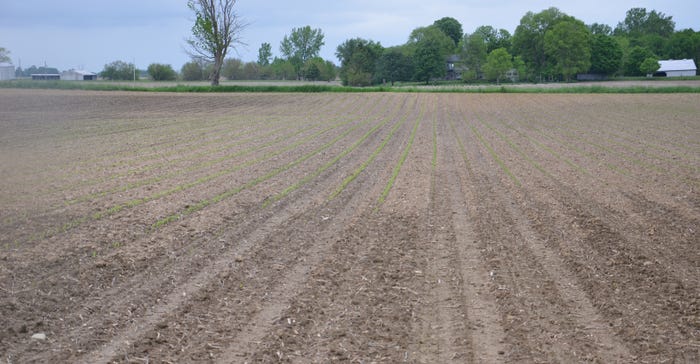
Scouting isn’t a glamorous part of farming, but Don Donovan works with farmers who find it is one investment that pays off. This is true for farmers starting a journey toward improved soil health by using no-till and cover crops, but it applies to all farming systems. And it could be especially critical this year when margins are razor-thin.
Effective scouting is hard work, takes time and must involve every field you farm multiple times a growing season, says Donovan, a district conservationist with the Natural Resources Conservation Service. There are reasons ag retailers hire college students looking for summer income to do their scouting — effective scouting can’t be done from the comfort of your truck, Donovan says. It should take quite a bit of walking, and getting dirty or soaking wet.
Scouting targets
What do you need to scout for? Many weeds, such as Palmer amaranth, need to be controlled when they are very small. You need to catch them as soon as they break though the soil surface and are identifiable. Many weeds grow so fast that waiting a few days, or until you can start to see them down the row, may mean ineffective control. That means potential yield reduction and multiple years of weed issues to follow.
Effective scouting requires you to be comfortable and confident in your ability to identify weeds at a very immature stage. Get a good field guide such as the Purdue Extension Corn & Soybean Field Guide to keep in your pocket as you scout. Or find a good scouting application for your smartphone or tablet. Corn Field Scout and Soybean Field Scout, available for $5.99 each from your app store, are based on the Purdue guide.
The same can be said for insects and other pests, such as slugs, armyworms, voles and more, that show up more often in no-till and cover crop systems, Donovan says. Effective scouting of fields before planting and right after planting can provide the information you need to determine if control is needed.
The Purdue guide contains calendars for both corn and soybeans that indicate when to look for specific pests. Timely, effective scouting can determine your profit margin as you try to decide to apply pesticides.
Precision technology in the tractor and combine cab can help your scouting program. If you see an issue during planting or harvest, mark that spot with GPS so you can keep an eye on it during the growing season. Take time to inspect that location to verify up close what the issue might be. It could go a long way in preventing the issue from reoccurring.
An effective scouting program can provide a definite return on your investment of time and/or money through improved yields and more efficient use of input products. Just because the neighbors are spraying or applying fungicides doesn’t mean you also need to do so. With margins on commodities being so small, you want every advantage you can provide to your crop to be successful, Donovan concludes.
Check out the slideshow for more scouting tips and advice on how to deal with common crop problems.
About the Author(s)
You May Also Like




